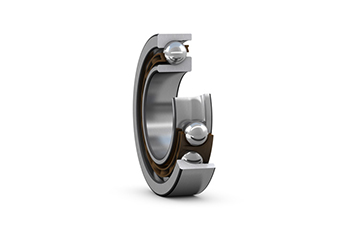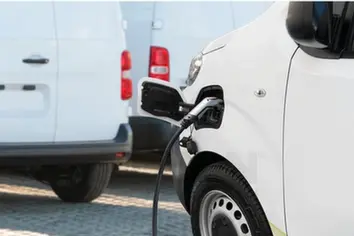- $USD
- SALES TEL: +44 (0)1709 789 933
- Contact us
- Services
- Log in
Angular contact ball bearings have the ability to accommodate both radial and axial loads simultaneously, making them ideal for applications which require combined load carrying capacity. These bearings are commonly found in demanding applications such as pumps, compressors, gearboxes and machine tool spindles.
Single row angular contact bearings can typically accommodate axial load in only one direction. If you require axial load capacity in both directions, you can choose to mount a pair of angular contact ball bearings, or alternativelty you could consider a double row angular contact ball bearing, which can accommodate axial load in both directions.





High Axial Load Capacity: Angular contact bearings can handle significant axial loads in one or both directions, depending on their configuration, making them ideal for demanding industrial environments.
Combined Load Handling: These bearings offer the advantage of simultaneously supporting radial and axial loads, ensuring reliability in dynamic applications.
High-Speed Performance: Designed for high-speed applications, angular contact ball bearings maintain their integrity and precision even at high rotational speeds.
Durability & Low Maintenance: Engineered for longevity, they offer low maintenance with minimal heat generation, ensuring smooth and quiet operation.
Versatility in Applications: From automotive to aerospace, their versatility means they are suitable for a wide range of uses, making them a go-to choice for engineers.
Angular contact ball bearings are essential in industries where both radial and axial load capacities are required. They are used in:
Pumps: Angular contact bearings ensure efficient pump operation, withstanding high pressure and load.
Fans & Compressors: Their ability to handle axial and radial loads makes them indispensable in high-performance compressors and fans.
Gearboxes: Gearboxes depend on angular contact bearings for smooth, high-precision operation under load.
Turbines & Windmills: Angular contact bearings offer stability and durability for energy-efficient turbines and windmills, enduring harsh conditions and high loads.
At Acorn Industrial Services, we offer a comprehensive range of ball bearings designed to meet various industrial requirements. Our ball bearings are engineered for precision, reliability, and high-performance operation in any application.



Single Row Angular Contact Ball Bearings, commonly used in pairs - either back-to-back, face-to-face, or tandem arrangement – or a combination of bearing sets.
Double Row Angular Contact Bearings, correspond in design to two single row angular contact ball bearings working in a back-to-back arrangement. They are suitable for combined axial loads where axial space is limited.
Four Point Contact Bearings, are designed to handle axial load in both directions.
When buying Angular Contact Bearings it’s important to consider cage material, preload and clearance. With universally matched bearings the predetermined preload or clearance is automatically achieved when mounted.
When purchasing angular contact bearings, it’s crucial to consider cage material, preload, and clearance. Universally matched bearings ensure optimal preload or clearance automatically upon mounting, enhancing performance and lifespan.
Choosing the right angular contact bearing depends on your specific application. Consider factors like load direction, speed requirements, environmental conditions, and whether you need single or double row bearings. Contact our experts for tailored advice.